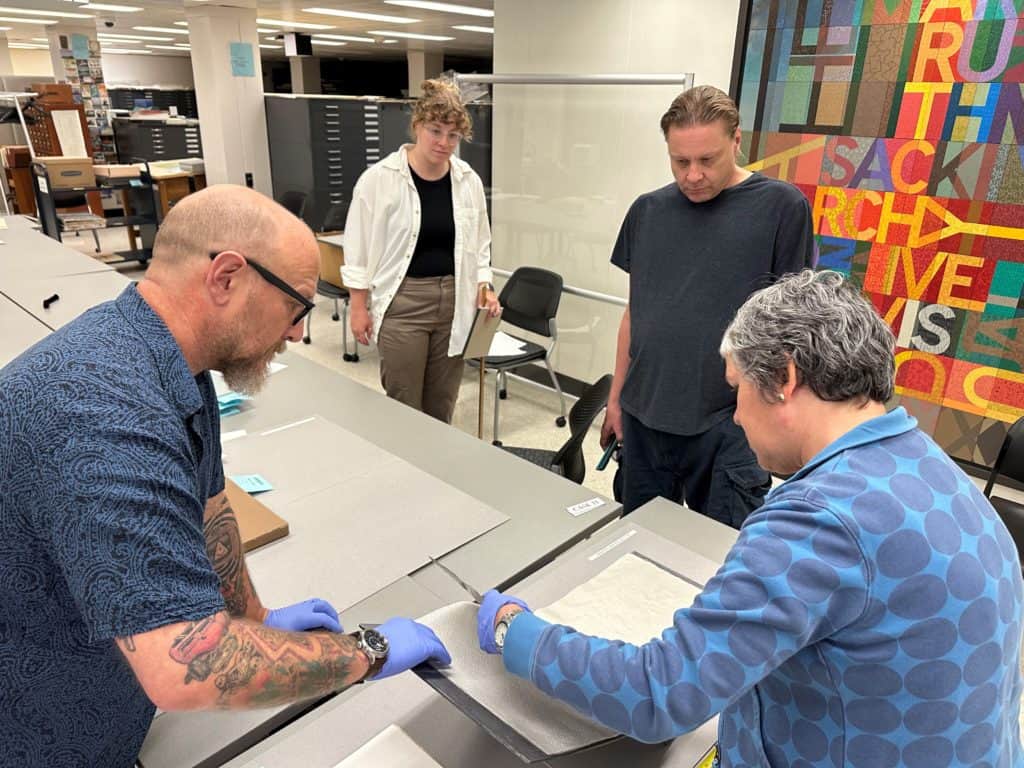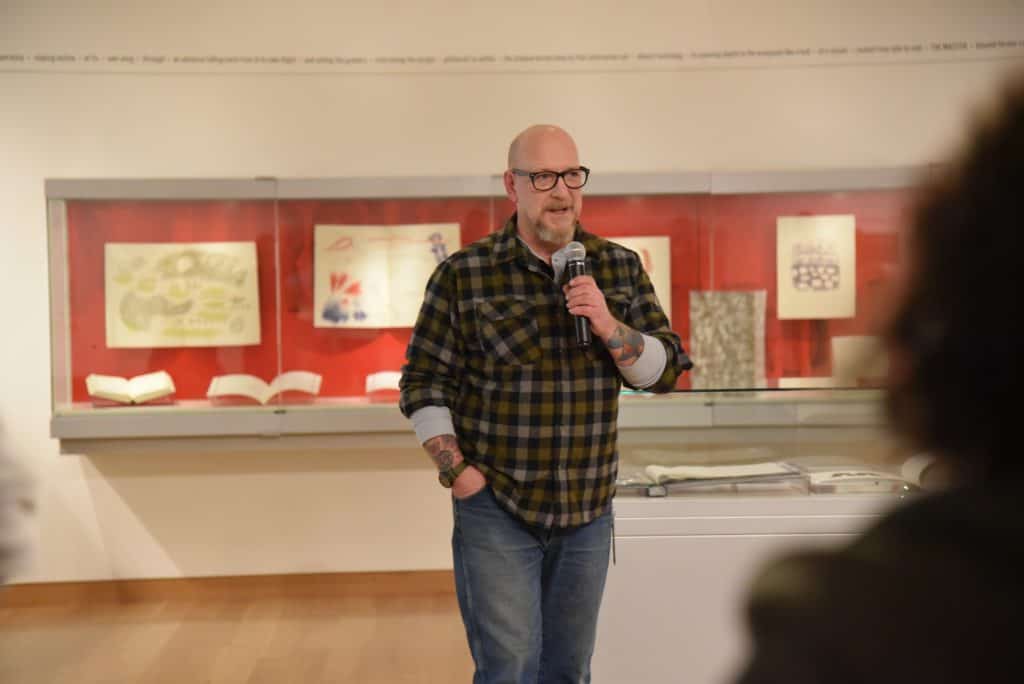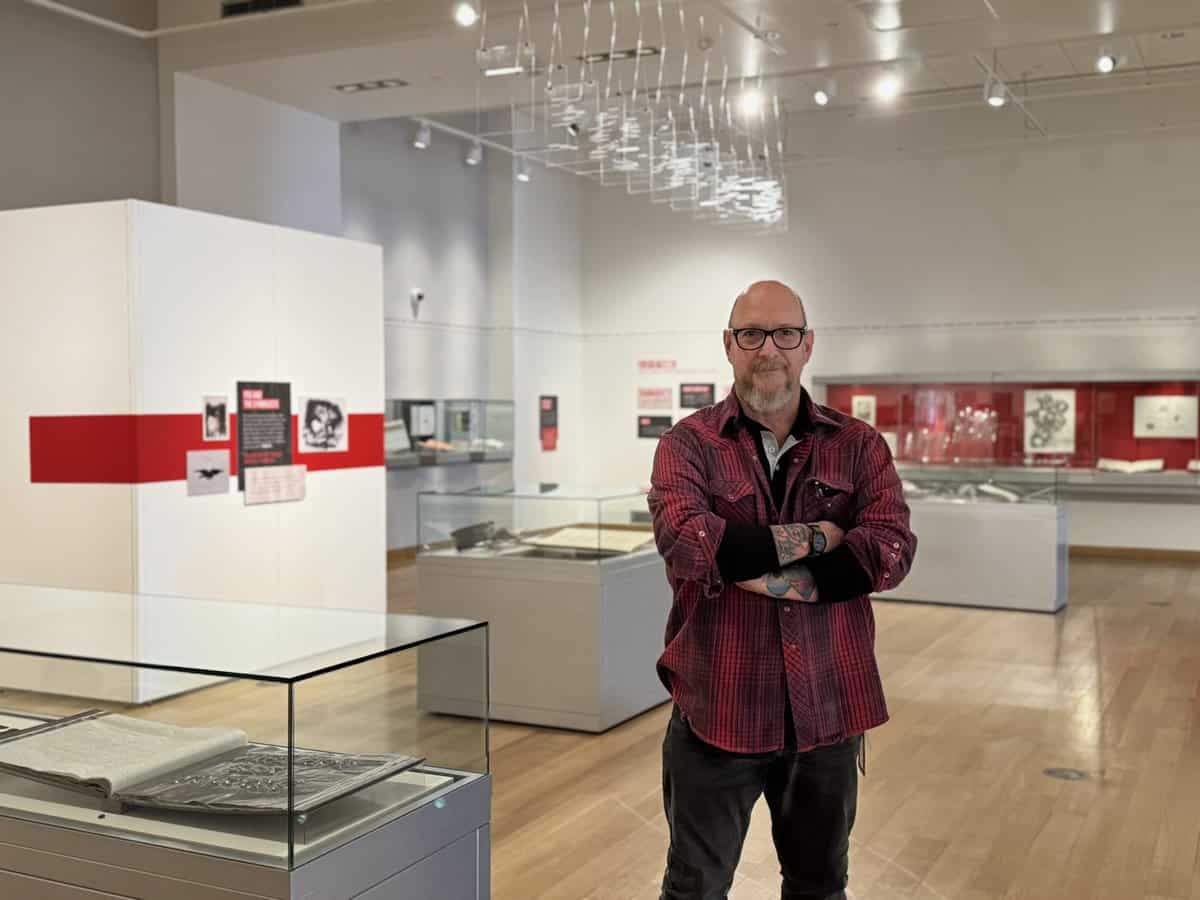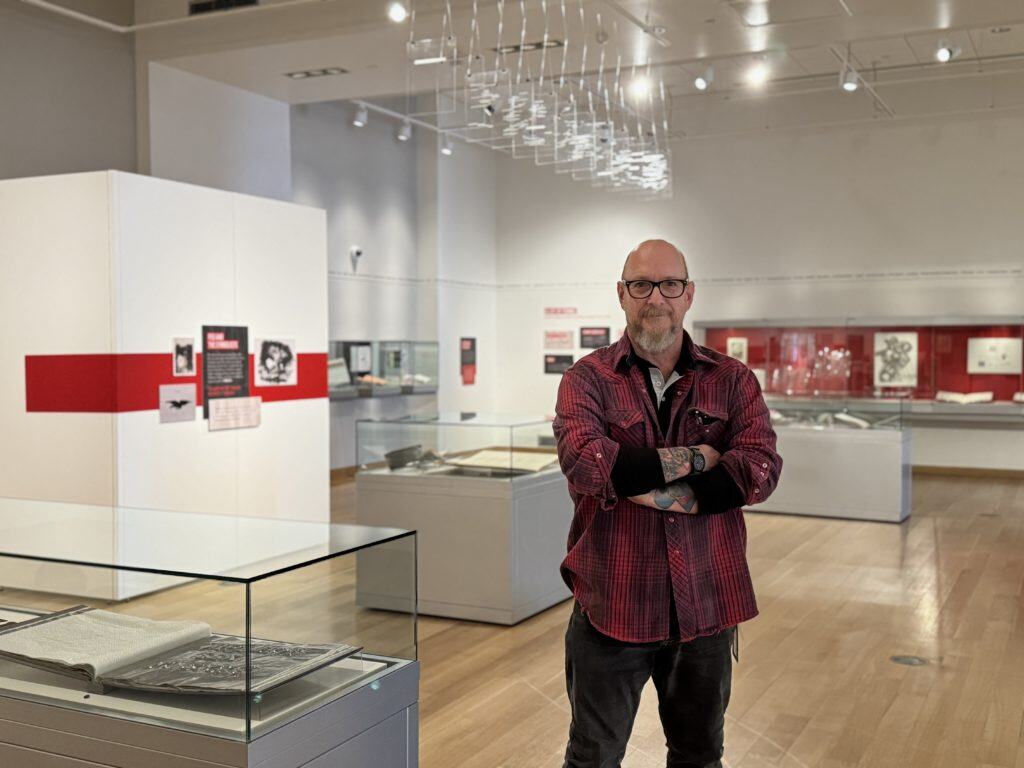Inside the University of Iowa Libraries is your look behind-the-scenes to meet the people and discover the stories making our organization unique and valuable. From cutting-edge databases to rare books, join us to explore a world of research, preservation, and discovery that fosters student success through countless touchpoints.
Rich Dana, the Sackner Archive project coordinator librarian, has something fascinating to add to every conversation. With his varied background as a librarian, instructor, artist, and carpenter, Rich will eagerly engage in conversations about everything from Avant-Garde art to the mechanics of early printing machines, like the mimeograph, to historic preservation. At the University of Iowa Libraries, Rich manages a unique archive of over 75,000 items.
This archive travelled from the east coast to the UI Libraries in 2019. The Ruth and Marvin Sackner Archive of Concrete and Visual Poetry was the personal collection of two collectors who championed some of the world’s most original creators of visual and concrete poetry. Their collection became the largest of its kind and contains items, now housed at the Libraries, that can’t be accessed anywhere else in the world.

Rich has been raising awareness of this extensive resource and making the materials in the collection more accessible to patrons and researchers since 2022 through his position, which is funded by a three-year grant from the National Endowment for the Humanities (NEH). As a recent example, Rich curated the spring 2025 exhibit in the Main Library Gallery featuring Sackner Archive materials that were important to the collectors. For Ruth and Marvin Sackner, the groundbreaking poem by French Symbolist poet Stéphane Mallarmé was at the headwaters of the artistic and literary movements that became their obsession. The exhibit, A Roll of the Dice: Symbolism in the Sackner Archive, is named after that poem. It aims to construct a timeline of works that illustrate Mallarmé’s influence on the 20th- and 21st-century Avant-Garde art movements while simultaneously helping newcomers make sense of concrete and visual poetry.
In addition to his work at the Libraries, Rich is an instructor at the University of Iowa Center for the Book and the Center for Book Arts in New York City. He is the author of the book Cheap Copies! The Obsolete Press Guide to DIY Hectography, Mimeography & Spirit Duplication. Learn more about Rich and his insight working with the Sackner Archive in the questions and answers below.

Q: When does your job feel most rewarding?
A: I love helping students and researchers discover the incredible stuff in this collection. It is wonderful to meet the scholars from all over the world who visit the University of Iowa just to access the Sackner materials. It’s equally rewarding when I host a class visit, and some undergraduate students hang out after the class ends because they are so energized by what they saw and are full of questions!
Additionally, working with students has been one of the great joys of this job. The student librarians and interns who have chosen to come and work on the Sackner Archive have been just fantastic. Working with these unique materials is challenging, and it takes a certain kind of intellectual adventurousness. I’ve been very fortunate to find students who are curious and have fun with the materials while also being diligent and responsible stewards of the collection.
Q: What is an academic library to you?
A: The Sackner Archive is a perfect example of the importance of an academic library. There are over 75,000 items in the archive, and it’s not practical or possible to digitize everything. There are objects, ephemera, and correspondence that provide insights for scholars, researchers, and authors that they simply cannot access anywhere else in the world.
Q: Share a skill or interest, outside of work.
A: I have always been fascinated by old machines, particularly old printing technology. I like to incorporate these old technologies into my art and writing, in the hopes of reminding people to explore the physical world, the reality outside of their phones.
Q: What might colleagues or students find surprising about you?
A: They might be interested to know that I didn’t get my master’s degree until I was in my 50s. Before that, I worked at a wide range of jobs—everything from carpenter to political lobbyist. I guess the message is: it’s never too late to try something different.
Rich’s exhibit, A Roll of the Dice: Symbolism in the Sackner Archive, is free and open to the public through June 27, 2025. Find visitor information on the Libraries website or learn more about the Sackner Archive on ArchiveSpace.

